Late last week, I was interviewed by Tom Elliott from Radio 3AW Melbourne regarding the dire financial situation facing the state.
Tom wanted to know what was driving Victoria’s ballooning debt. And, more importantly, the measures the state government could take to resolve the situation.
Below is a summary of the themes discussed in the interview.
The Problem:
Victoria has the highest state debt in Australia and the lowest (AA) credit rating.
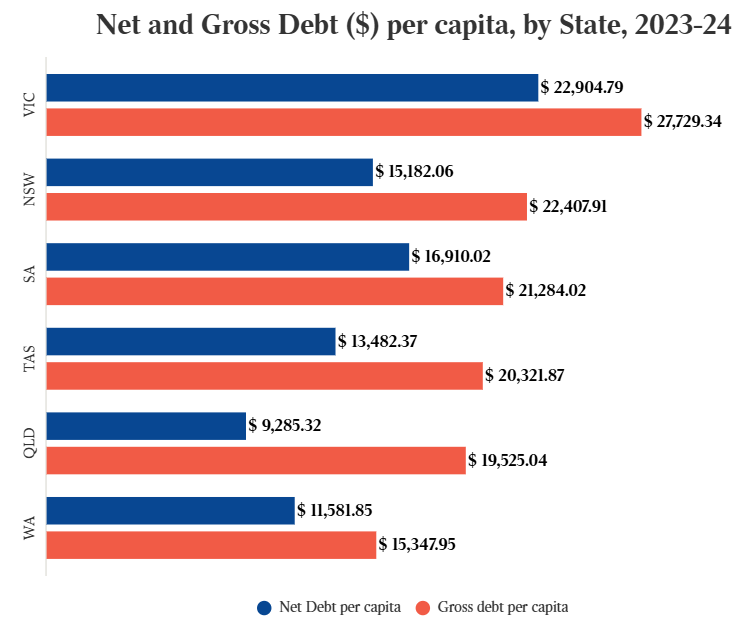
The two major ratings agencies warned that Victoria risks further credit rating downgrades if it does not bring debt under control.
Further rating downgrades would increase interest payments and debt and require further tax increases and cuts to services.
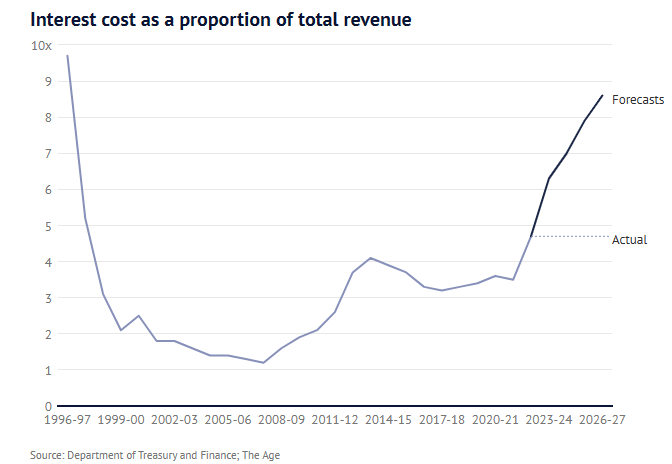
Last week, the Victorian government flagged that it would cut some 3,500 jobs (6%) from the state’s public service. This is a good move, provided the cuts are aimed at back-office bureaucrats, not front-line staff, such as nurses, teachers, police, etc.
Wage costs are Victoria’s most significant expense.
Victoria’s public service has exploded in size under this government.
In the 15 years leading up to 2022-23, Victoria’s public sector headcount increased by 59%, outpacing the state’s 29% population growth.
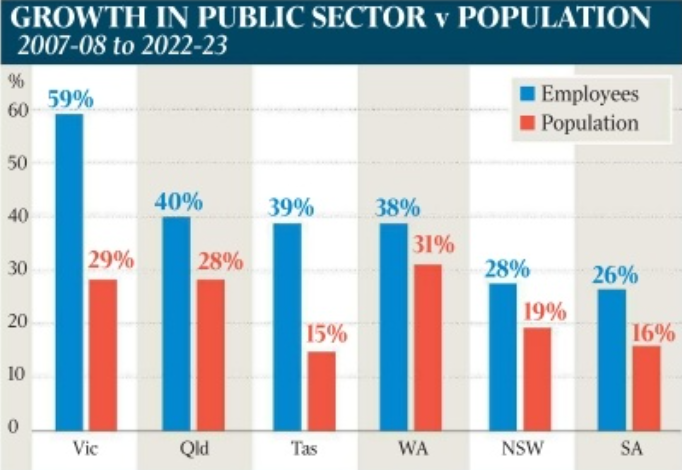
Source: The Australian
Over the same 15-year period, the state’s public servant wage bill climbed by 152%, outpacing all other Australian states.
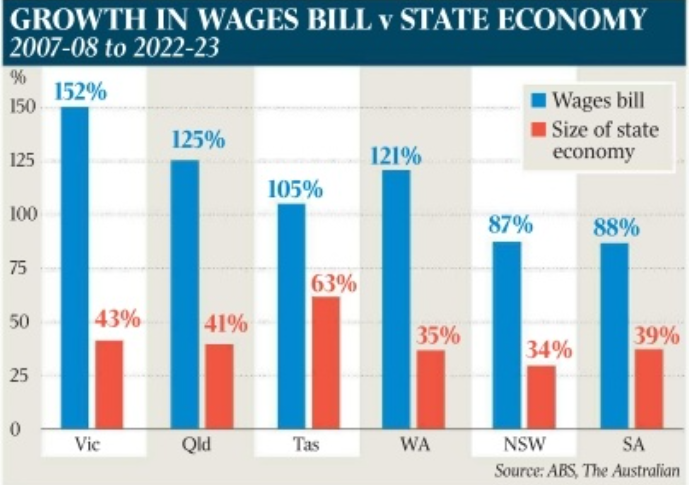
Source: The Australian
According to the recent budget update, staff expenses (including superannuation) are forecast to total $42.4 billion in 2024-25, up from $19 billion when Labor took office a decade ago.
Following a decade of cost overruns and questionable project selection, infrastructure is another concern for the Victorian government.
Victoria has recently seen cost overruns totalling $2.5 billion for the Metro Tunnel, $4 billion for the West Gate Tunnel, and $16 billion for the North East Link.
The Suburban Rail Loop (SRL) was initially announced to cost $50 billion, but the Parliamentary Budget Office (PBO) forecast that building and operating all three stages could cost $200 billion.
A new report from the Victorian Auditor-General’s Office found that the costs of 110 significant projects have increased by $11 billion since last year.
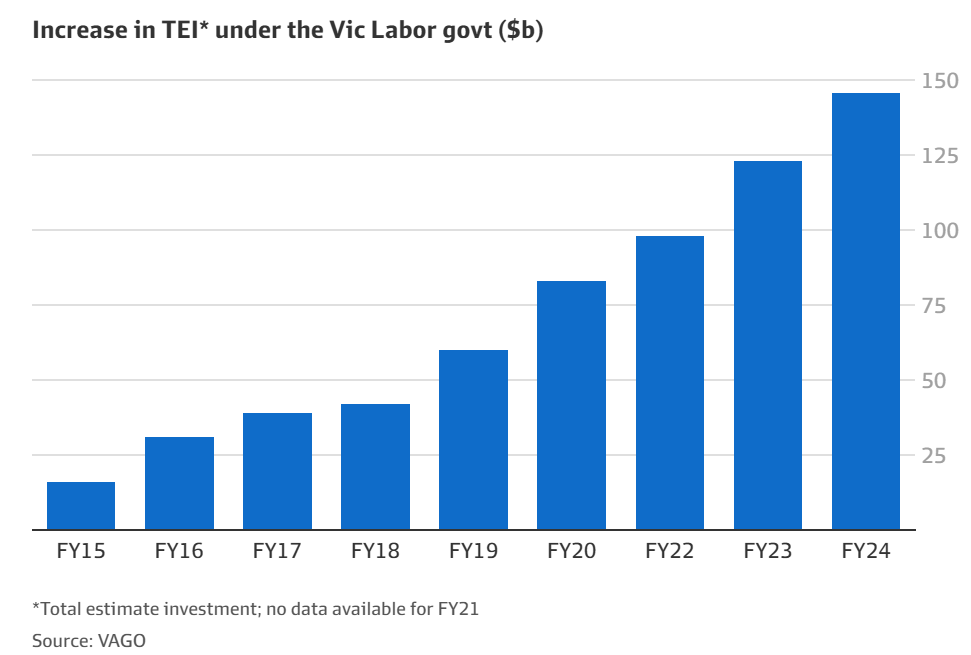
Nearly half of the 110 significant projects examined by the Auditor-General’s Office saw a rise in total estimated investment.
What should the State government do?
Unfortunately, Victoria is caught between a rock and a hard place on debt.
The government should undoubtedly cut the bureaucracy to save costs. Again, wage costs are Victoria’s most significant expense and have more than doubled since Labor came to office.
However, Premier Jacinta Allan should never have ignored expert advice and signed the contracts to build the SRL, locking the state into the project.
Now, Victorians are stuck in a no-win situation.
If the SRL is cancelled, Victorians will be liable for massive break fees and billions of dollars in compensation, similar to what happened on the East-West Link but on a much larger scale.
But if Victoria proceeds with the SRL, which is largely unfunded, then it risks more debt and ratings downgrades.
The government should only engage in infrastructure projects that have been rigorously assessed and offer genuine net benefits. Mega projects like the SRL and North East fail this test.
The State government should also demand that the federal government cut immigration.
The whole reason why Victoria has built these hideously expensive projects is to keep up with rampant population growth.
Melbourne’s population has increased by around 2 million people this century. Melbourne’s population is projected to increase by another 3.5 million over the next 31 years to 9.0 million by 2056.
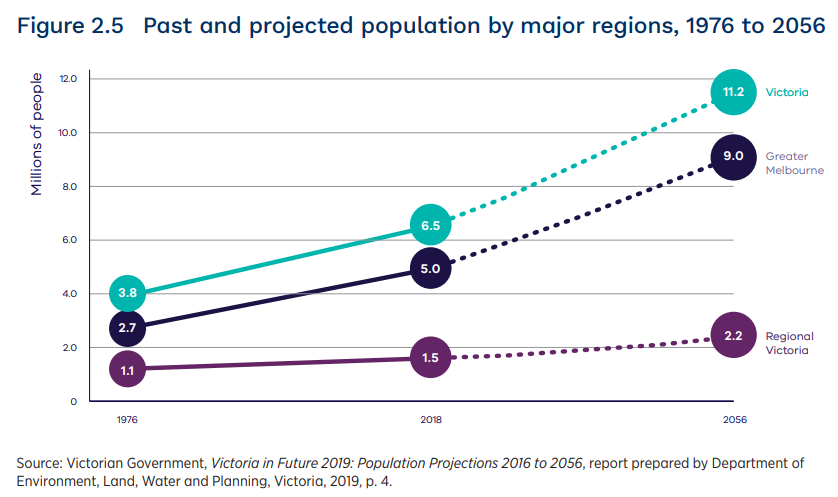
Melbourne would have added 5.5 million people in just 56 years.
The state clearly cannot afford such manic population growth.
Melbourne hasn’t built enough infrastructure for the 2 million people that landed over the past 25 years. It certainly won’t if it adds another 3.5 million, as projected, over the next 31 years.
Excessive immigration is bankrupting the state.

